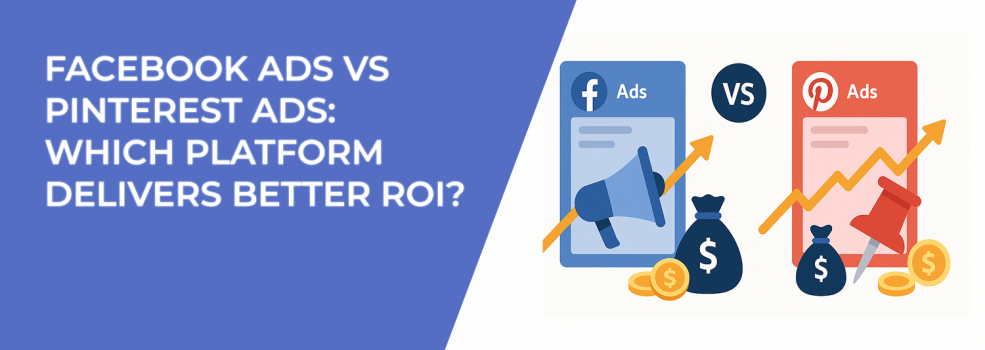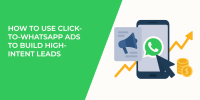Businesses today rely heavily on online ads to reach new customers. Facebook and Pinterest are two of the top options. Both can deliver strong results, but they work in very different ways. If you’re wondering which one brings better ROI, the answer depends on your goals, your audience, and what you sell. Let’s look at each side step by step.
Audience Reach
When it comes to scale, Facebook is unmatched. With billions of active users, you can find almost anyone on the platform. More importantly, the targeting is extremely advanced. You can create campaigns that reach people based on:
-
Age,
-
Gender,
-
Location,
-
Interests,
-
Online behavior.
This makes Facebook a flexible choice for almost any type of business. A local café can run ads targeting only people within five miles, while a global fitness brand can reach health-conscious users across multiple countries. If you’re not sure where to start, Everything You Need to Know About Facebook Ads Audiences is a great resource.
Pinterest, on the other hand, has fewer users but a very different mindset. People don’t open Pinterest to scroll randomly. They come with a purpose — to search, to plan, to save ideas. A bride-to-be might be searching for “wedding centerpiece ideas.” A homeowner may be saving “kitchen remodel” pins. These are clear signals of purchase intent. For businesses in visual or lifestyle-driven niches, this makes Pinterest a goldmine.
Cost of Ads
The price of ads often determines how far your budget can stretch. On Facebook, costs can climb quickly. High competition in industries like finance, tech, or e-commerce often pushes the cost per click higher.
Pinterest ads usually come with a lower cost per click. With less competition, advertisers often find their money goes further. But remember, the smaller audience means your ads may reach fewer total people. So the trade-off is clear: Facebook gives you scale, while Pinterest offers efficiency.
Conversions and ROI
Facebook excels at creating funnels. You can start with a broad awareness campaign, then retarget people who clicked, watched your video, or visited your website. Finally, you can show ads designed to close the sale. For example, a skincare brand might run an educational video first, then retarget viewers with product demos, and later follow up with a discount code to push for conversion. To set these campaigns up correctly, check Facebook Ads Funnel Strategy: From Audience Identification to Conversion.
Pinterest works differently. People are often much closer to making a purchase when they see your ads. They are already planning a project, shopping for ideas, or comparing options. If your promoted pin appears at the right time, the step from saving to buying is short. For example, someone searching for “home office desk ideas” could be ready to buy a desk that same week. This kind of intent-driven action often leads to strong ROI, especially for products that look good in photos.
Which Platform to Choose
So, which one is right for your business? The truth is, it depends on what you sell and what your goals are.
Facebook ads are a strong choice if you want:
-
To reach a wide and varied audience.
-
To use location targeting for local businesses.
-
To build multi-step funnels with retargeting.
-
To test multiple audience types before scaling.
This makes Facebook the better option for service-based businesses, software companies, and brands that need both reach and precision. If your campaigns aren’t performing well, Facebook Ads Not Converting: How to Fix It is a must-read.
Pinterest ads are a great fit if you sell:
-
Home décor, furniture, or renovation products.
-
Fashion, jewelry, or accessories.
-
Food, recipes, or kitchenware.
-
Crafts, DIY, or other creative tools.
For businesses that thrive on visuals and inspiration, Pinterest is the place to be. A handmade candle shop or a boutique clothing brand often performs better here than on Facebook.
Tips to Boost ROI
No matter which platform you choose, strategy matters.
On Facebook, success comes from testing and retargeting. Start with a broad audience, then narrow down to the people who engage most. Retarget visitors who clicked your ad or viewed your products — this often brings the highest return. For a step-by-step process, see How to Define a Target Audience for Marketing.
On Pinterest, think of it like a search engine. Optimize your pins with keywords people type when looking for inspiration. Use phrases such as “modern kitchen design” or “cozy fall outfits.” When your ads match what people are searching for, you appear at the right time.
For both platforms, visuals play a major role. Bright, clear, high-quality images get attention faster. Avoid cluttered or dark photos that blend into the background. And always track more than clicks — measure real sales, cost per acquisition, and overall return on ad spend. That’s where you’ll see the truth about ROI.
A Quick Guide by Niche
If you’re still unsure, here’s a simple guide:
-
Local businesses (cafés, salons, services): Facebook wins with strong location targeting.
-
Fashion brands: Pinterest is great for shoppers in planning mode, Facebook for scaling reach.
-
Home décor or furniture: Pinterest usually delivers stronger ROI because of search intent.
-
Tech and software companies: Facebook fits better thanks to detailed targeting options.
-
Food and recipe brands: Pinterest shines with lifestyle content, while Facebook reaches broader audiences.
This breakdown can help you quickly see where each platform fits.
Final Thoughts
The question isn’t just which platform is better — it’s which one works best for your specific niche. Facebook offers unmatched reach and retargeting tools. Pinterest offers intent and often lower costs.
The best approach? Test both. Start small, compare results, and shift more budget to the one that brings higher ROI. Digital advertising is all about experimentation. The more you test, the faster you’ll find what works.
So, where will you meet your next customer — while they’re casually scrolling on Facebook, or while they’re planning their next purchase on Pinterest?

